If you harvest your own fruit-any kind of fruit-you know how many leftover skins, seeds, pits, cooked stuff, raw stuff, and other things are leftover from processing. So much scrap, from so much good fruit. If you're anything like me, you may have wondered if there's anything you can do with it. There is: fruit scrap vinegar.
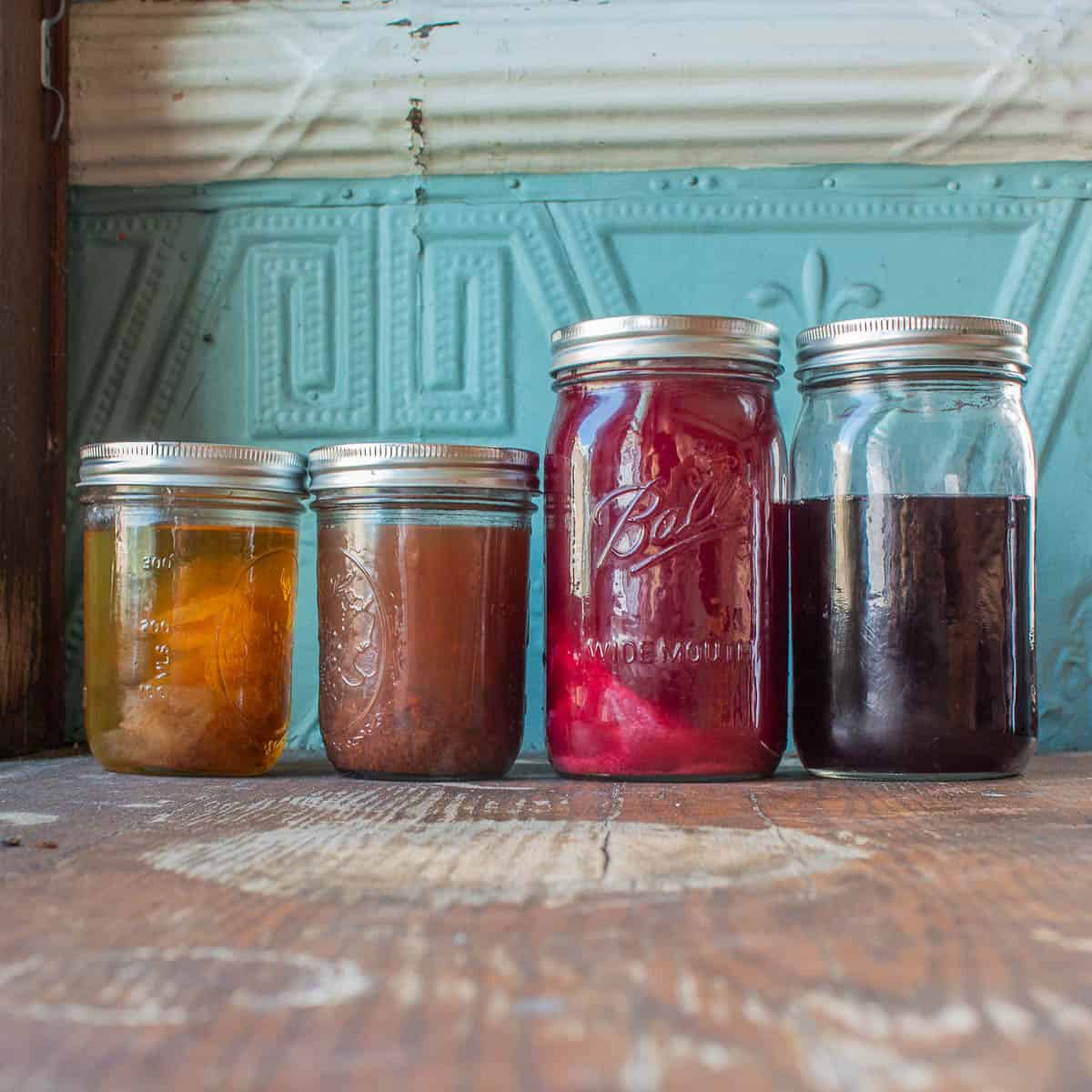
I first started messing around with fruit scraps in nice restaurants I worked in where we would have all kinds of amazing fruit come in. After the processing, sometimes there would be things leftover, pits, skins, seeds--things I knew had really delicious solutes still hanging out in them, but I didn't know what to do with.
The first thing I started doing was infusing vinegar with spent grape pits and seeds--and it was shocking. The flavor was concentrated, pure and delicious. If you want to know more about that, see my post on fruit-infused vinegar here--it's a great way to use fruit, especially berries.
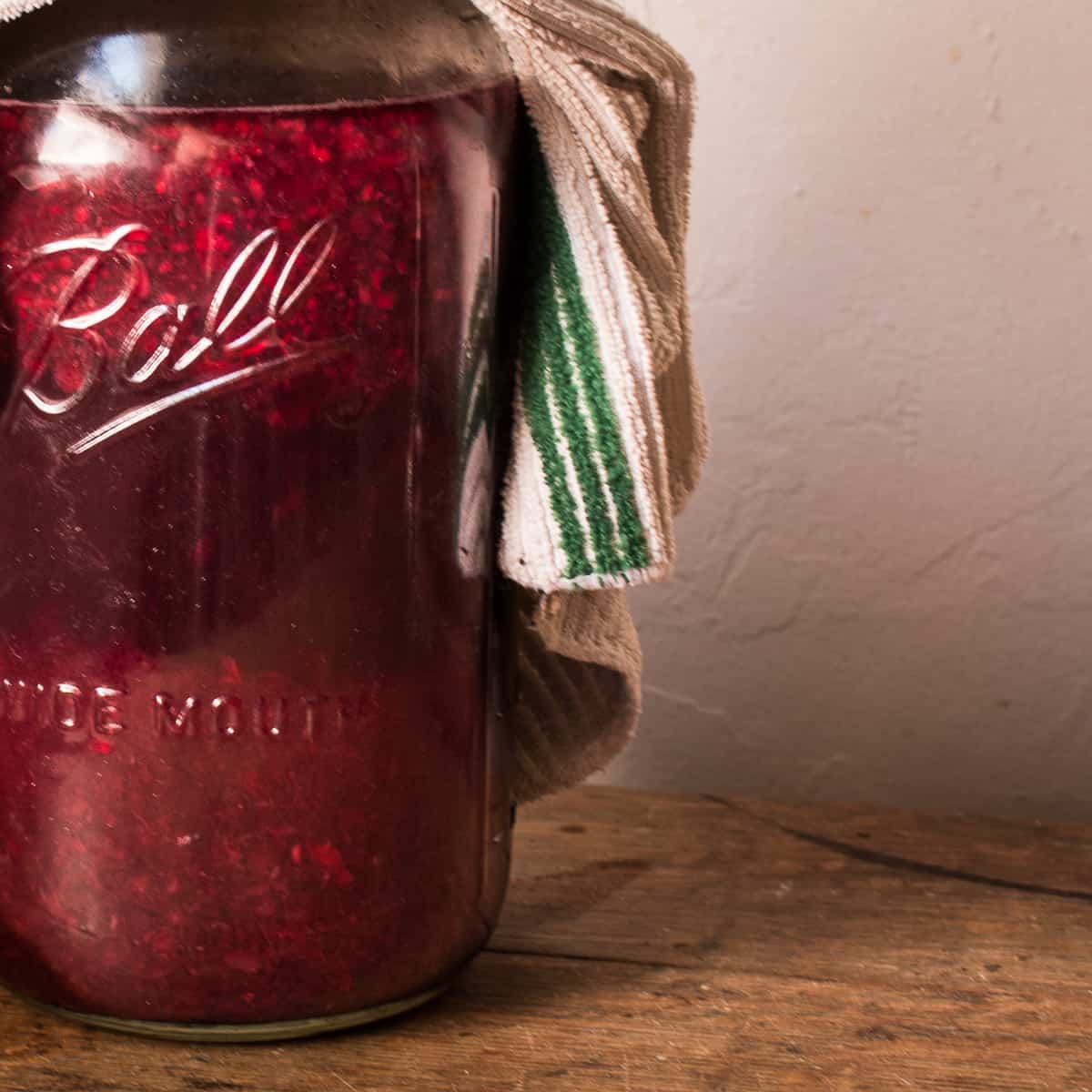
Step by Step
This is the older, more mature cousin to the infusion recipe. This is an easy, naturally fermented vinegar made from skins, seeds, pits, pulp, and just about anything else you can throw at it. I've made it with frozen fruit, dried, rehydrated fruit, fruit juice and skins. The images below describe the process.
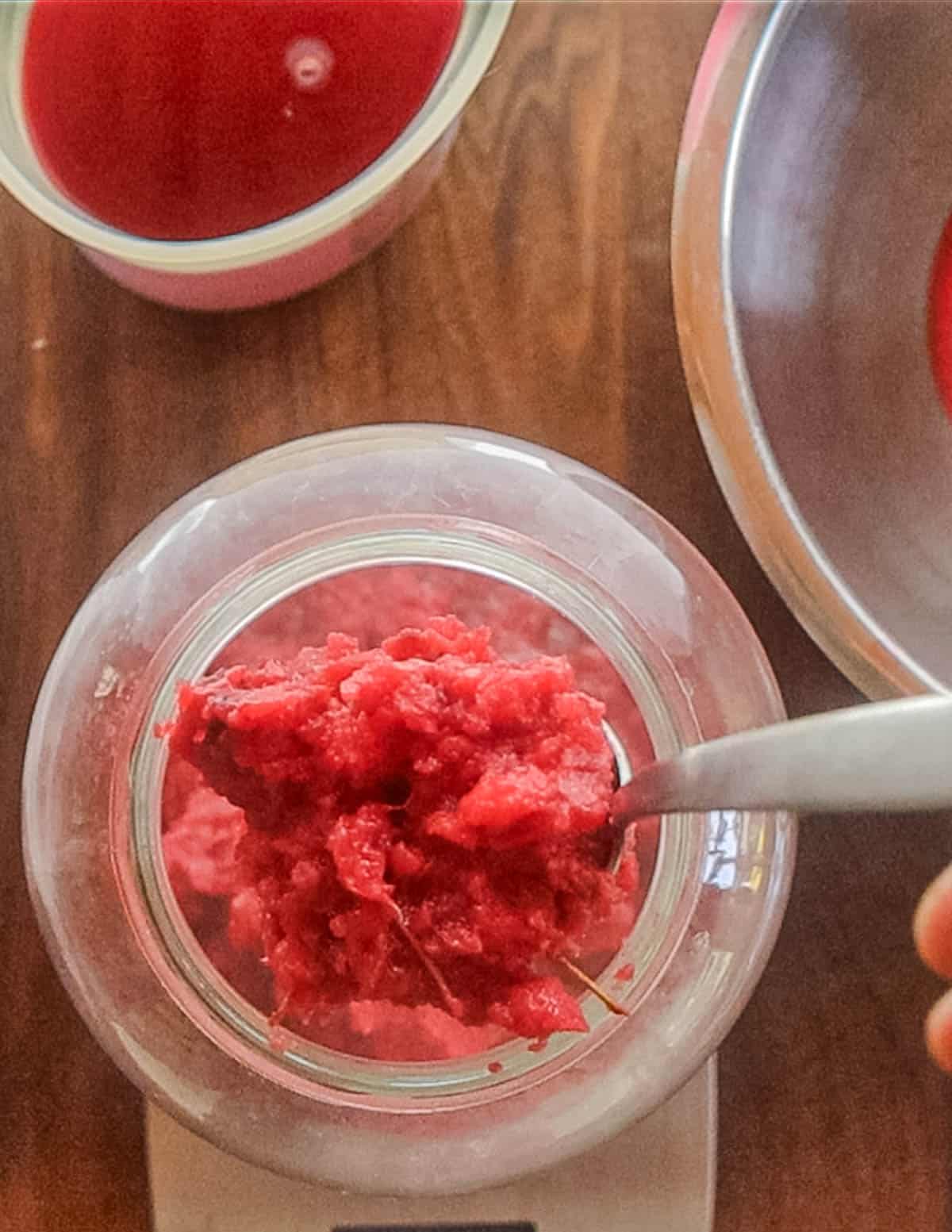
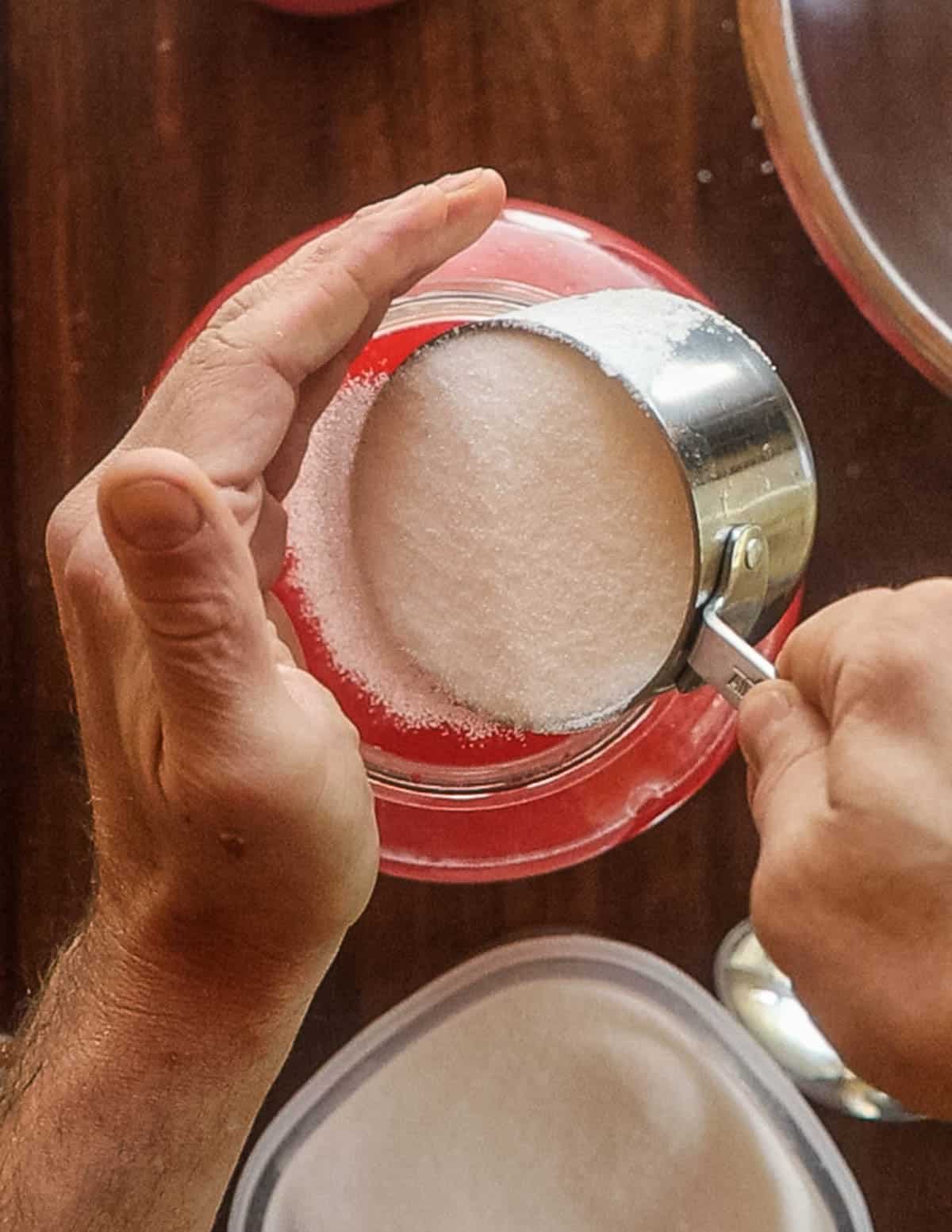
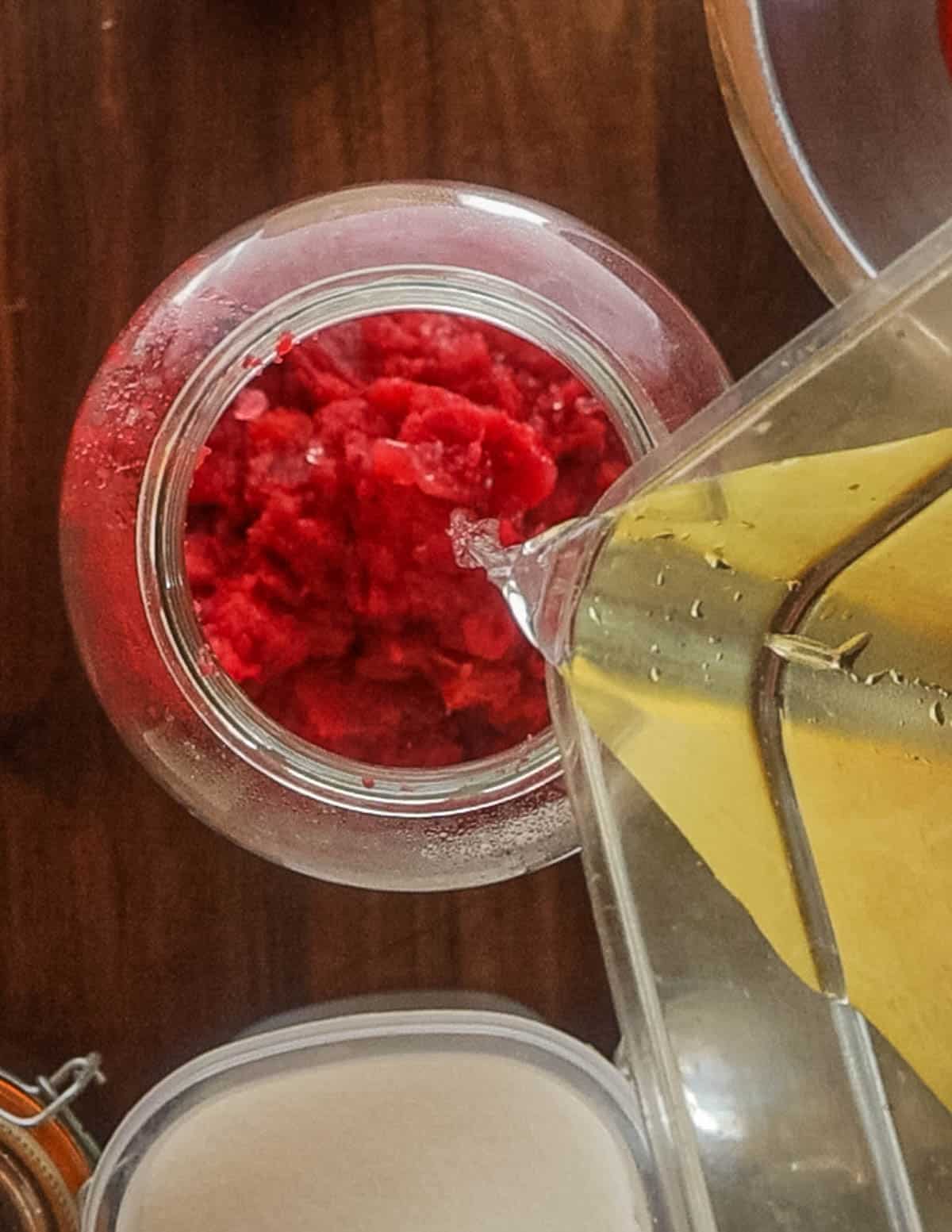
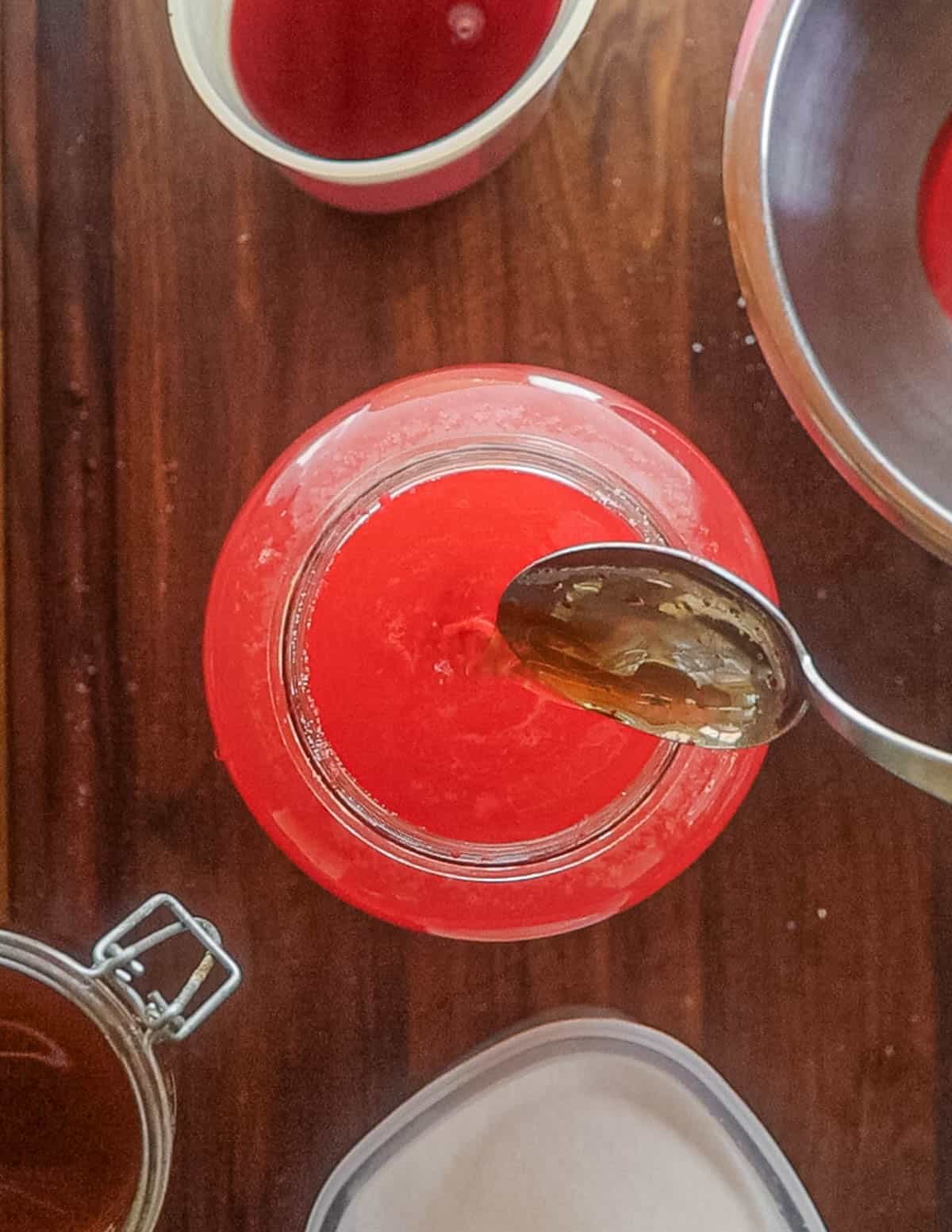
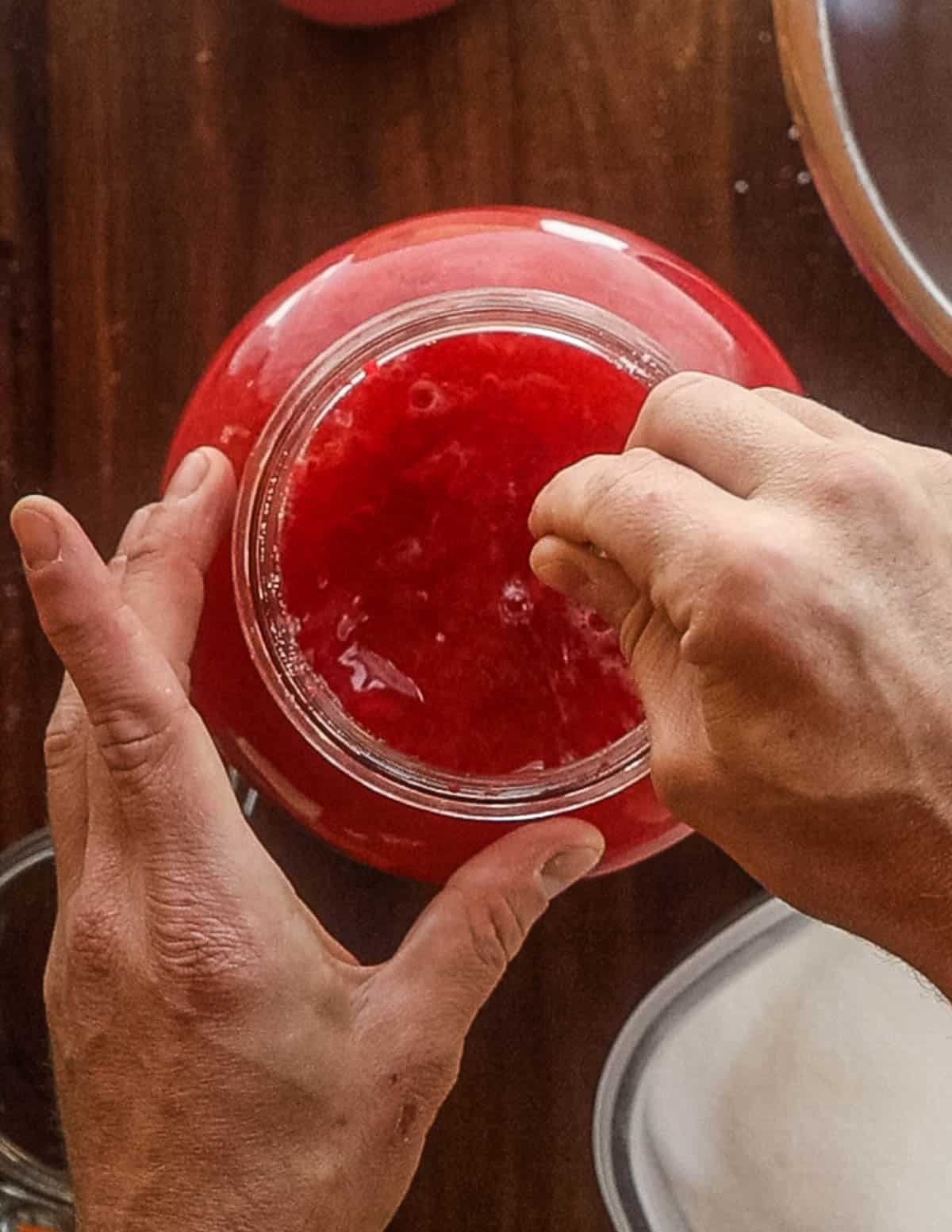
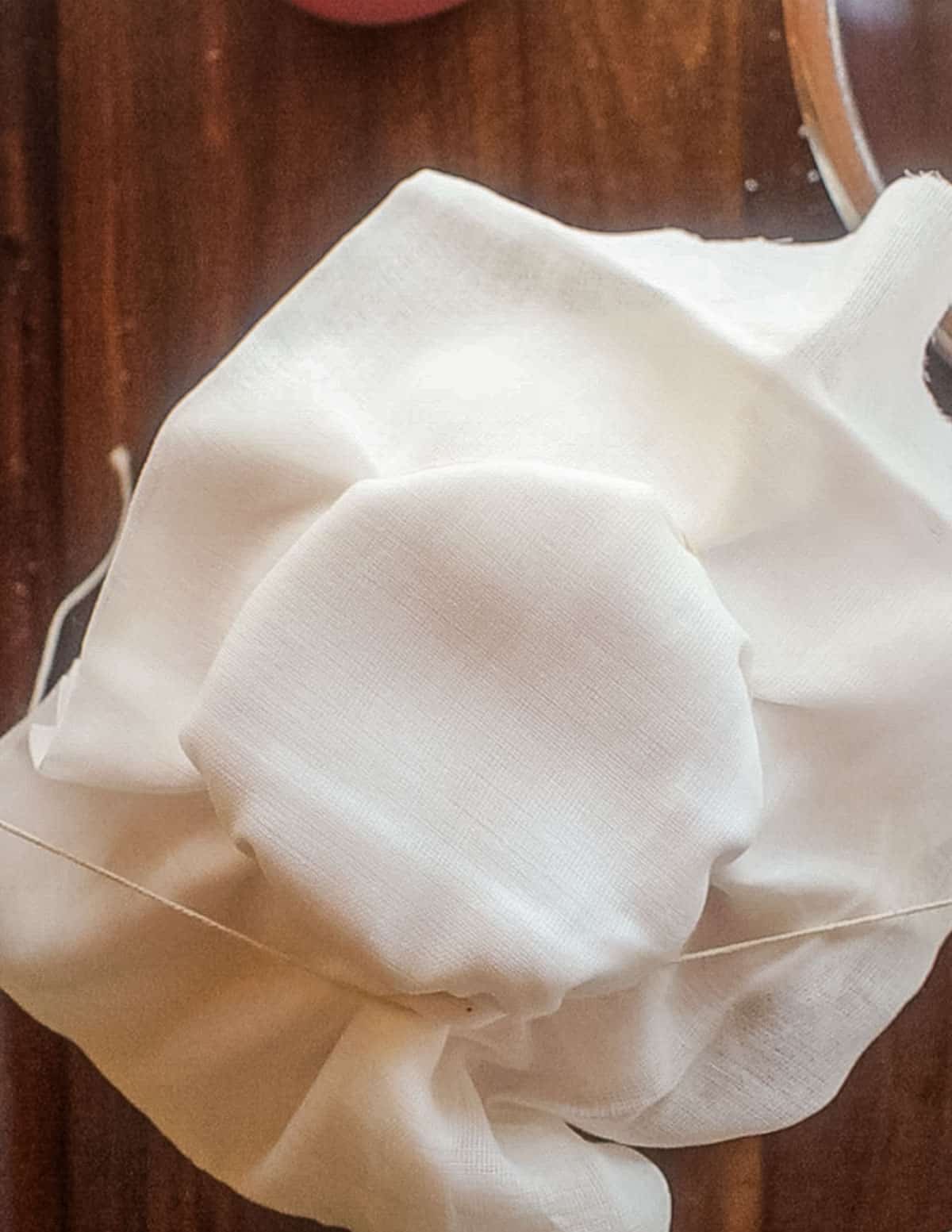
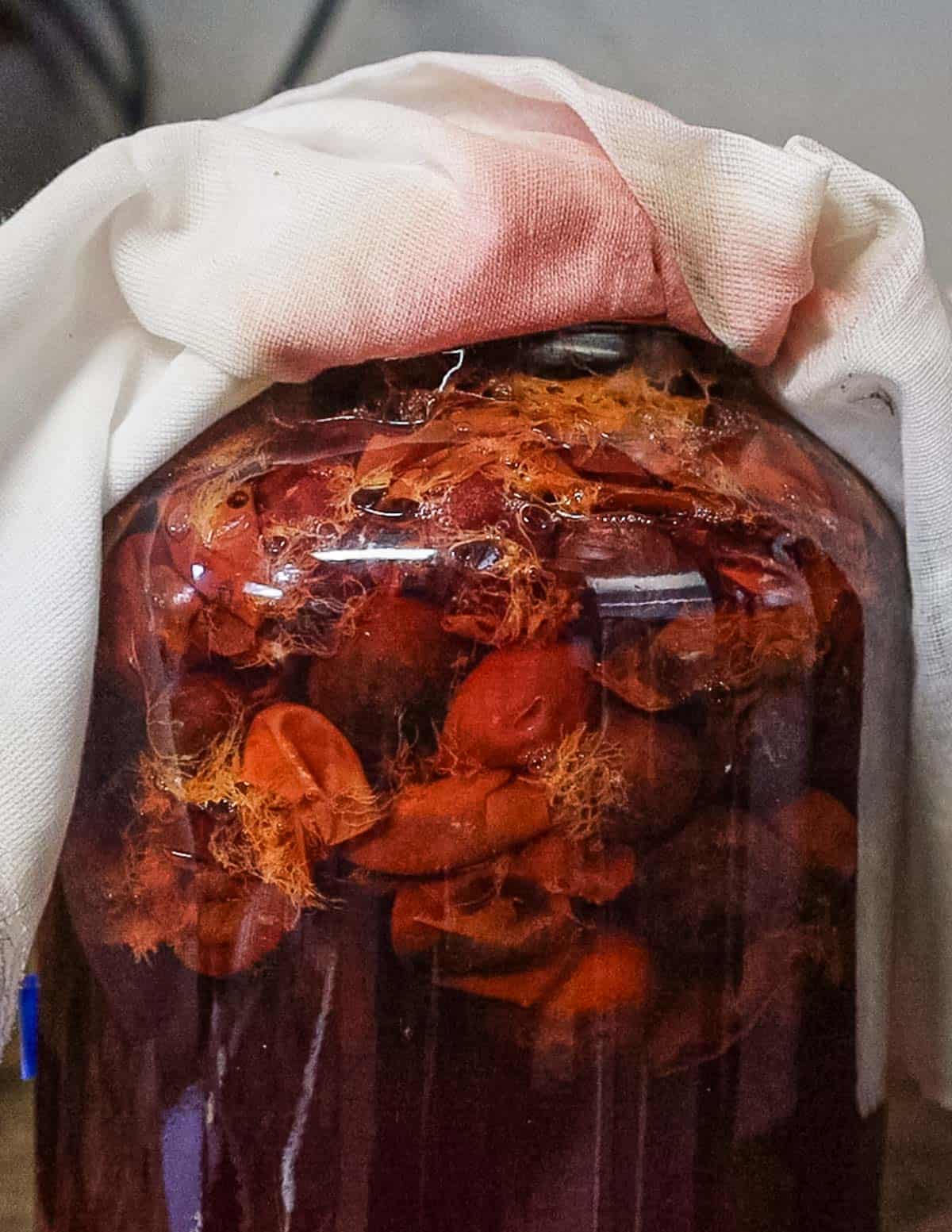
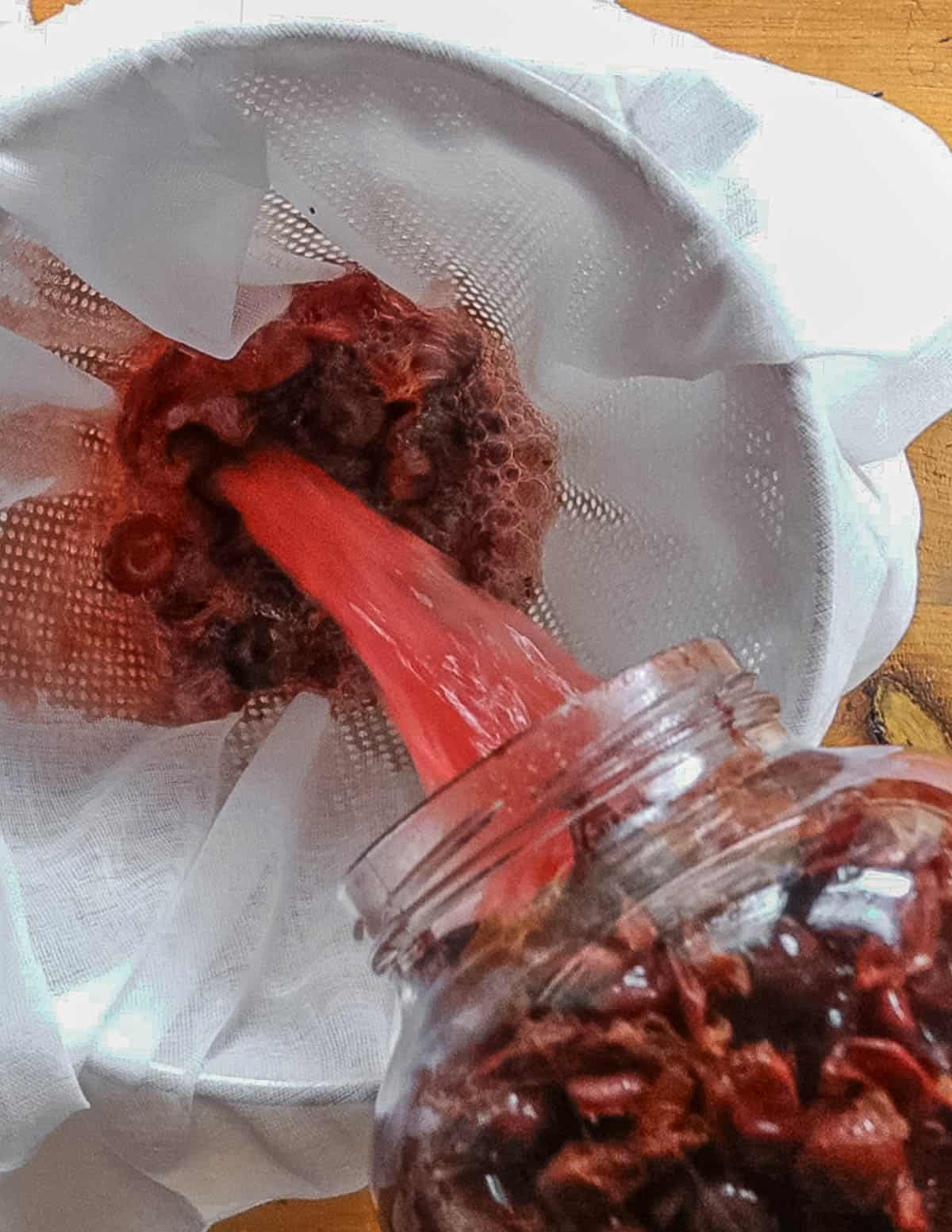
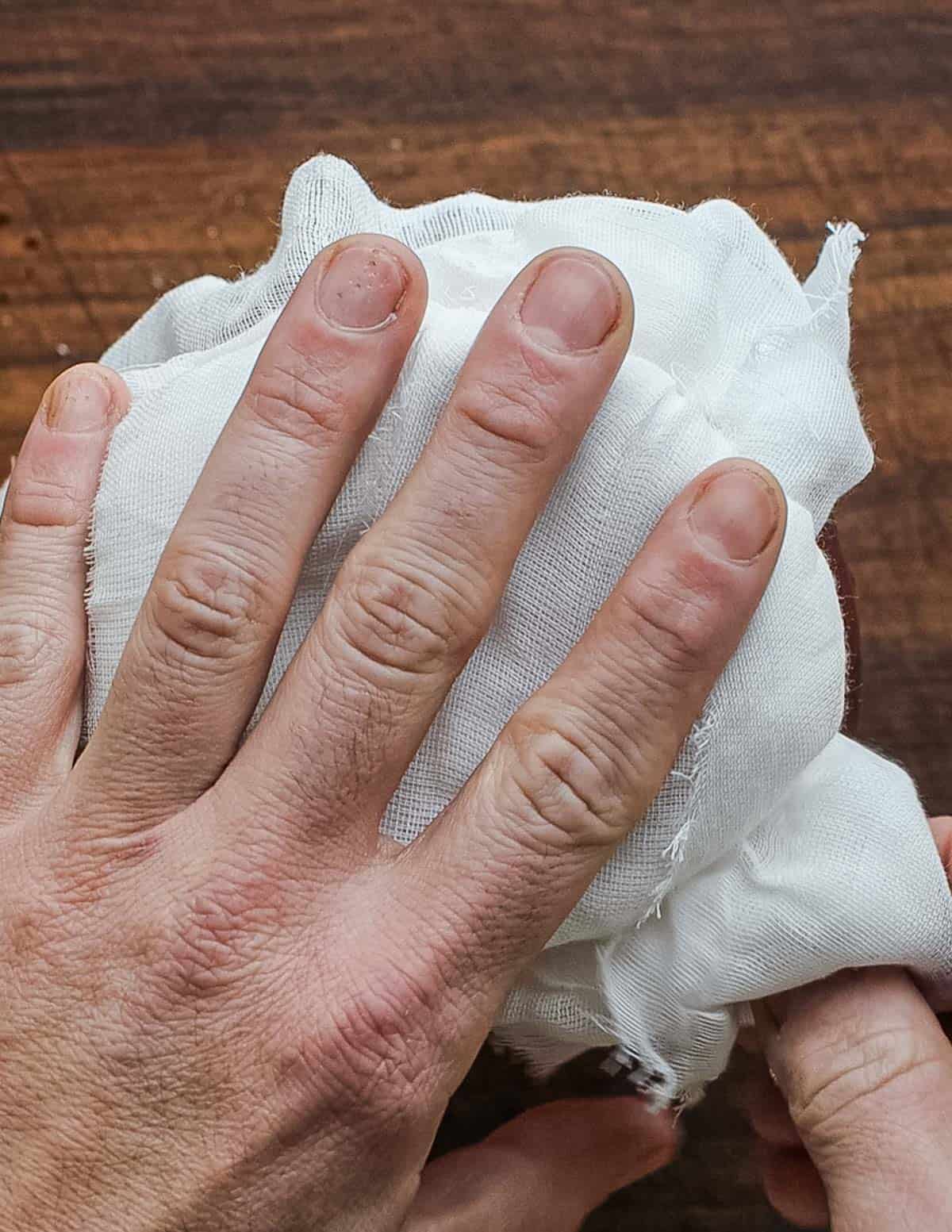
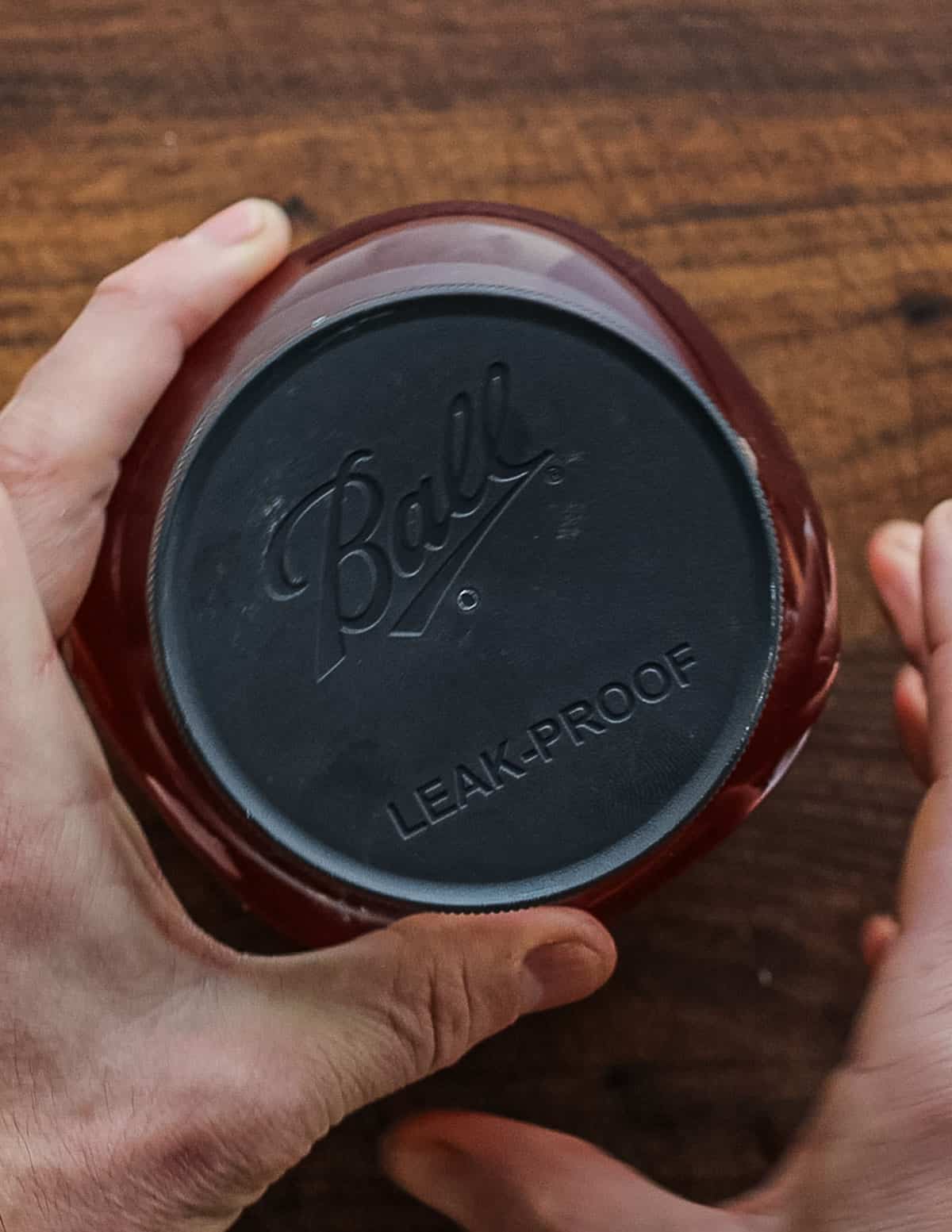
Adding Live Vinegar and Grain Alcohol
The basic recipe is a hybrid of two of my favorites: one from the Art of Fermentation by Sandor Katz, and the other by Rene Redzepi in the Noma Guide to Fermentation. The Sandor Katz recipe is the most basic, and it's a great introduction--you just take fruit and sugar water, and let it ferment. It takes a long time, but it works well.
Rene's recipe speeds the fermentation process by adding live vinegar, along with some grain alcohol to increase ABV, ensuring an acidic result, as if there isn't enough sugar in the beginning product you won't have the amount of alcohol you need to get a good, tart, vinegar.
That being said, I made the recipe for years before I started adding a bit of vodka to it, so know that it's optional. There's recipes for both in this post.
What kind of fruit makes the best vinegar?
Berries, grapes and plums from my experience. The sky is really the limit though: pineapples, mango skins with bits of flesh attached, etc. Here's some of my favorites.
Highbush cranberries
Highbush Cranberries make a brilliant red vinegar. For these I always use the scraps leftover from making a cold juice extraction.
Wild Grapes
Like red wine vinegar, a beautiful nearly purple color, this will taste similarly strong and aggressive, but it's made by your own two hands! Use the scraps leftover from wild grapes after making juice.
Wild Blueberries
Wild blueberries make a deep blue vinegar, and will have a flavor comparable to wild grape, with a very subtle blueberry note.
Aronia Berries
The flesh of aronia berries is tannic, so vinegar is a great way to use them as the finished vinegar won't absorb tannins from the fruit.
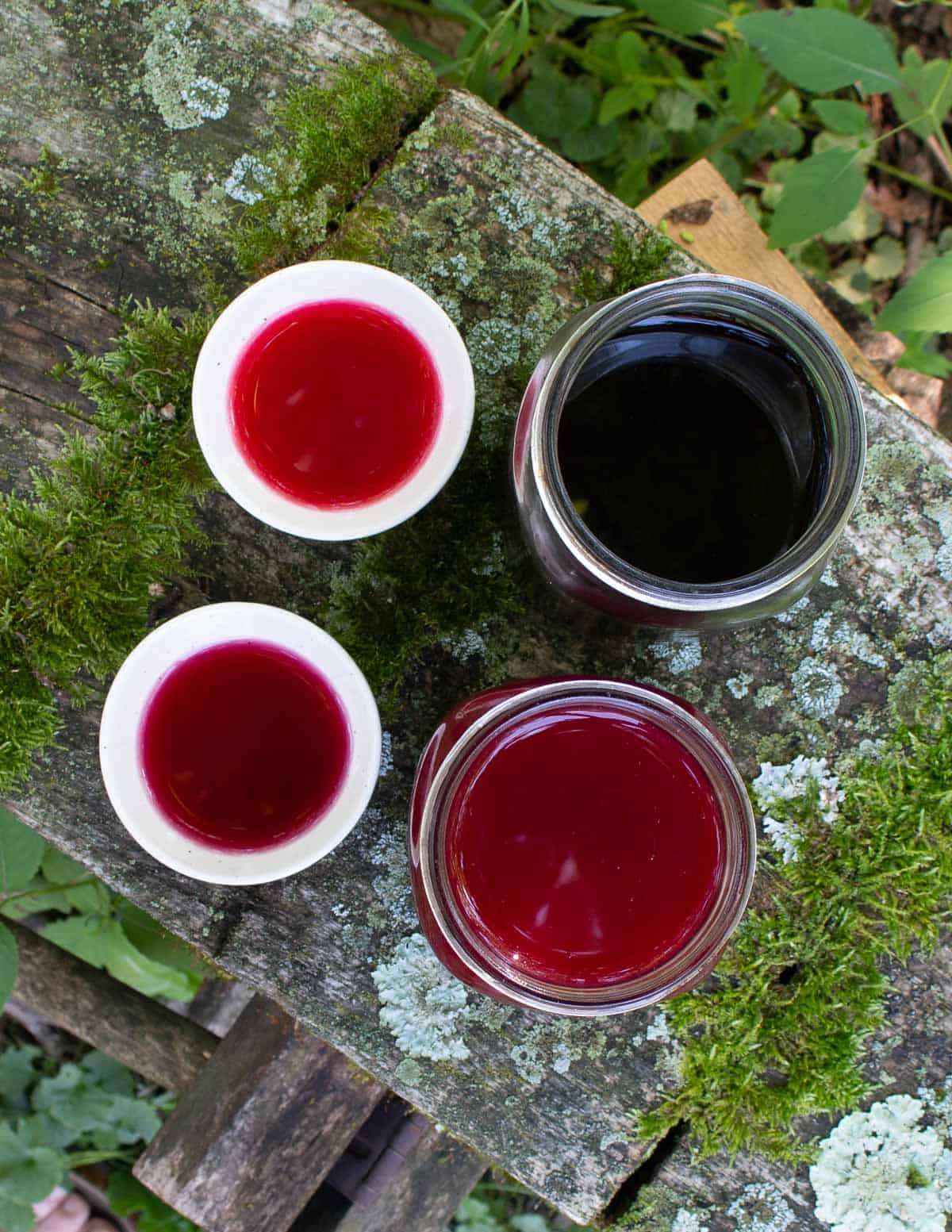
Dealing with fruit flies in vinegar
Since I've posted this, I've gotten a lot of questions regarding the flies.
If you're starting this with fresh fruit during the growing season you may have to trouble shoot some things. Depending on your location, temperature, and conditions, fruit flies can be a small or large headache. Here's some tips.
- Secure the cheesecloth or lid as securely and tightly as possible. Use more layers of cloth than you think you need-at least 3. A single layer of cheesecloth is too porous to prevent flies from getting into the vinegar.
- If after two weeks you notice fruit flies, strain the solids out trough the finest mesh or cheesecloth you have, then wash the container, pour the liquid back in, cover and continue the fermentation process with a new cheesecloth top.
- Start and keep your vinegar outside to avoid having the flies in areas you frequent.
- We are conditioned to think that insects are problematic and potentially dangerous as they can harbor bacteria, but, in the case of vinegar, a fly or two in the liquid can actually help ensure a strong fermentation process as they are covered in natural yeasts. As the pH of the liquid decreases the flies die.
- Freeze your fruit and start the vinegar in the winter.
- While unappealing, fruit flies will not harm the vinegar or make it unsafe to consume.
How to Use Fruit Vinegar
The finished vinegar of dark fruits can be used anywhere you'd use red wine vinegar in general cooking. I often add sugar or maple syrup to it. Here's a few examples of how I use it.
- One of the best things to do with it is to add a sweetener like sugar or maple syrup to taste, and use it to season salads, along with oil.
- You can make it into a syrup by mixing equal parts vinegar and sugar by volume. It's good served warm or cool with game meat.
- Add it to barbecue sauce.
- Seasoning sour soups, especially borcht.
- Use it to make pickled beets and other pickles.
- Use it in a vinaigrette to season marinated vegetables, beans, and other composed salads.
FAQ
Vinegar powder is a chef secret for adding acid to dishes where you may not want additional liquid. To make a small amount to try, put your vinegar mother on a non-stick sheet such as a silpat/silicone mat, and dehydrate at 150 F until crisp. Store in a jar and powder to use it. Scoby mothers can be used similarly. I find it a novelty, personally.
Absolutely! Fresh cooked, or frozen fruit will all work fine Since the vinegar is "backslopped" with living vinegar, there is no need to worry about the success of fermentation if your fruit has been cooked or frozen, which can kill some of the living bacteria on it.
Yes, and it's delicious. You can substitute the juice of any fruit for the water in this recipe. To layer flavor, you can ferment the scraps of fruit in their pressed juice.
Classic Fruit Scrap Vinegar
Ingredients
- 1 cup granulated sugar
- 2 lb fruit scrap from juicing, etc skins, seeds, etc
- 2 Tablespoons living vinegar such as apple cider, or vinegar from a previous batch
- 2 qts water
Sweetening
- 1 cups sugar, honey or maple syrup or to taste
Instructions
Fermentation
- Mix all ingredients, stir well to dissolve the sugar and put into a container, such as a plastic food tub, gallon water jug, bucket, etc.
- Cover the lid with cheesecloth, secure with twine or a rubber band, and leave out at room temperature, stirring as often as you can remember (I use a wooden spoon).
- After 1 month, strain out the solids, then pour the mixture into a half-gallon mason jar. Cover with cheesecloth and continue fermenting for another month or so, until the vinegar is good and strong. When it tastes sour like regular vinegar to you, screw a lid on the jar and store.
- If you forget to strain the solids out after one month, don't worry! It will turn out just fine and will have no effect on the success of the vinegar provided the vinegar is still allowed to respire and has access to air.
- During the process, if you get fruit flies which are annoying but will not harm the finished product refer to my trouble shooting tips in this post.
Sweetening (optional)
- Sweeten the finished vinegar by whisking in honey, maple syrup, or sugar to taste. Start with ½ cup of sweetener per quart of vinegar. Some add a splash of brandy too.
- Heat the sweetened vinegar until hot but not boiling. Cool and store in a container with a tight fitting lid at room temperature for up to two months, or refrigerated for long term storage.
Video
Accelerated Fruit Scrap Vinegar with Alcohol
Ingredients
- 750 grams 3 ¼ cups water
- 172 grams ¾ cup plus 1 Tablespoon previous fruit vinegar, or apple cider vinegar with live cultures
- 184 grams ¾ cup plus 2 Tablespoons 80 proof vodka
- 1 lb 2 packed cups fruit scrap from cooking, juicing, etc
- 50 grams ¼ cup sugar
Instructions
- Combine all ingredients in a 2 quart sized container, cover with cheesecloth, and allow to ferment for 2 weeks at room temperature, stirring as often as you can remember (I use a wooden spoon).
- After two weeks, strain the vinegar and allow to continue fermenting, still covered with cloth, until you like the flavor, a month or two.
- When you're pleased with the flavor, and you can't taste any sweetness in the vinegar anymore, put it into jars and seal, then store in a cool dark place.

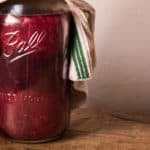
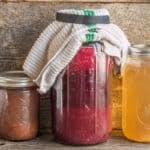
Debra
Can I use tomato scraps? I have some tomatoes that were damaged by birds and/or grasshoppers. I will eat the edible parts but I can tell there will be a lot of scraps of skin and flesh. There are a few small spots of white mold. Even with undamaged tomatoes there’s usually a significant amount of flesh and skin and core removed when slicing a regular tomato. (I’m guessing the stems should be carefully avoided due to toxins.)
Also what about a pear that has turned entirely brown but has no visible mold? I love pears and I usually eat the entire thing except the seeds and stem, but if I don’t eat them as soon as I buy them I forget and they just turn brown in the fridge.
And last, what about cucumber skins? In particular I have some West Indies burr gherkins that keep on taking over my garden. I love them but it’s more than I can eat yet somehow never quite enough at any one time to make into pickles.
Thank you!
Alan Bergo
Yes pears and tomatoes will work just fine here. Tomato juice fermented to vinegar is excellent and is sold commercially.
Young
Hi. I tried making the long version and I dont think you mention stirring the container during the first month? I then thought that Id stir once a week since if you didnt mention stirring, I wouldnt have to? After a few days, there was just mold on top? So im guessing I should have stirred? Lol
Alan Bergo
Hi Josh. Sometimes recipes are so easy they can be difficult, and things I see as self explanatory may not seem that way to readers, so sorry if that seemed unclear. You definitely stir the ingredients to dissolve the sugar before you allow it to age.
Maya Bolduan
I’d love to hear some of your favorite ways to use this! Also what kind of shelf life can we expect? Thank you!
Alan Bergo
Hi Maya. I added a little section. You can use the vinegar in general cooking anywhere you'd use red wine vinegar. The first thing you should make is taking a pint and adding maple syrup to it to taste. Use it to season salads and leafy greens. As the pH of vinegar is so low it's a preservative in and of itself, which means it'll last indefinitely at room temperature or in the fridge.
Letitia Pepper
I have some pomegranate trees and discovered some of the fruit that have become soft and would be considered spoiled, but they smell vinegary.
Can I use the pulp-covered seeds inside the fruit that are spoiling as the basis for making vinegar?
Thanks for any thoughts; I hate to waste things!
Alan Bergo
Yes, absolutely you can use them and it will make a beautiful vinegar.
Ellen
Just finished a batch of this vinegar made from the pulp and seeds left after making wild blackberry jam. It sat for the first month and looked pretty good, I filtered it, and then we were gone for 2 months. Came back to an excellent vinegar. Can’t wait to make a salad tonight. It would be perfect with walnut or pumpkinseed oil.
Alan Bergo
That's great Ellen. I'm actually just updating this as I've been sampling some really good vinegars lately. The change is that I'm going to recommend you some honey or maple syrup to taste. I usually add a bit when I make salads with it anyway so it skips a step, and it really rounds out the flavor.
EmGee
When you say "Strain the solids" are you including the mother, and that stays out of the secondary finishing?
Alan Bergo
The mother is still in the liquid even if the "lump" form is not.
David Bailey Freeman
Just found your site and now I’m excited to up my vinegar game.
BTW: the best vinegar I’ve made is from paw paws. I usually add some mango too. I’m currently fermenting a paw paw, quince, field corn vinegar. If you try making paw paw vinegar:, don’t use the skin or seeds both of which contain a neurotoxin.
Alan Bergo
Yeah I've been meaning to try paw paw vinegar. Thanks for the reminder.
Heather
Thanks for the reply! While researching more about vinegar, I saw someone else mention that after a certain point, the kahm yeast in their vinegar disappeared. The same happened with my wild blueberry vinegar. I transfered it to a different sterilized container & let it sit... and the kahm just disappeared. Now it's clear & smells amazing. I'm so glad I didn't have to pasteurize it.
Heather
I have a couple questions:
1) Is it possible to get rid of the kahm yeast in a batch while still keeping the vinegar 'alive'? Or should I just filter and pasteurize, if I'm not terribly concerned with keeping a living vinegar mother from this batch, but definitely want to be rid of the kahm yeast.
2) I made your long recipe batch. One from wild blueberries & one from ground chokecherry. At one point for both of them, I used an air lock, but then felt concerned that the air lock would kill the fermentation. Is it ok to use an airlock when making vinegar?
Thanks for the recipe! My vinegars turned out great!
Alan Bergo
I haven't used an air lock. Vinegar needs to respire to ferment correctly. As long as there's air exchange of some kind you should be fine. As for the Kahm yeast, it's super annoying. If the vinegar is sour to your liking, you can pasteurize it. It may lose a little oomph but it should kill the kahm.
Jonathan
I made apple cider vinegar after having scraps leftover from applesauce making. Just put in 1 quart jars with water and 1tbsp sugar, cover with cheesecloth and strain after a few weeks. It has mother, and incredible flavor. Should I use this as “live vinegar” for berry vinegars?
Alan Bergo
Yes, that's correct. What you don't want to use is vinegar that has been sterilized, since it won't ferment.
Wisconsin Dave
Hey Alan,
The recipe turned out great. I love the flavor and color, it’s going to be my go-to vinegar recipe now. I have a quick question though, is it like any other live vinegar I get from the store in that I don’t need to refrigerate this, or would you recommend keeping it in refrigerated? Thanks!
Alan Bergo
No it is like any other live vinegar, no refrigeration needed.
Siski
Hi. I'm just making this for this first time, and have a question. So after letting it ferment for the first two weeks with the fruit scraps in, I strained out the fruit scraps. There is a lot of sediment left in the bottom of the jar of vinegar. Should I strain it again with a finer strainer (or cheesecloth) to remove the sediment, or is it better to continue fermenting with the sediment still in it? Looking forward to tasting the final results. It's already quite good!
Alan Bergo
Leave it in. If you want to refine it more later filter it after the fermentation is complete.
Nancy
Do I need to add the scraps all at once, or can I start the recipe and keep adding until I get 1 pound of scraps?
I’m going to make paw paw vinegar.
Thanks!
Alan Bergo
You can keep adding them as you get them. Paw paw vin sounds great!
Kristina Jager
I am excited to see how this turns out, I've made apple cider vinegar before but never thought to use plum scraps as that's what I have at the moment. Now to look up all the things I can do with fruit vinegar.
Shirley Ziegler
You mention that mold isn't good. I live in the Virgin Islands and I'm not sure whether what looks like mold on my vinegar is the "mother" or something I should be worried about. Can you tell me how to know? Thank you for your recipes. I've been using Sandor Katz' book for several years and it's nice to see the addition of vinegar and vodka. I'll try it.
Alan Bergo
Shirley, what you have is likely Kahm yeast. It is not harmful, but it is pesky. Strain the liquid through a coffee filter.
Quint Young
I've made some vinegar from strawberries, and it turned out really nice, so recently I bought some more strawberries and left them in the fridge for too long, and some of them got mold on them, some of them got soft spots, so I took them out, trimmed them up, and washed them off. I then cooked them lightly because I didn't want any mold spores sneaking in. I've never used any cooked fruit to make wine or vinegar, what's your take on that? Using those older strawberries, and then cooking them a little bit really brought out a wonderful Aroma, I'm hoping it will carry over into the vinegar
Alan Bergo
Just remember that cooking things will destroy the natural yeast on them, so you may want to jump start it with a dash of whey, fermented brine, or sauerkraut juice.
Jeannie
Hello Alan,
Thanks for all the wonderful information you share on your website!
I started a batch of goumi berry vinegar a few days ago and noticed today that there were little fruit maggots in it.
Gross yes, but I didn't want to waste it so I strained out the fruit and critters. Will the resulting liquid still turn into vinegar?
Do I now stir that for a week or two before leaving it alone for a month? I did not add any grain alcohol but am wondering if that would help it along. Any suggestions would be welcome. Thanks!
Alan Bergo
Thanks Jeannie. As far as your question re: safety, it's very safe. Bugs, unlike molds, are completely harmless in something like vinegar, and, as they carry natural yeast on their bodies, they will likely speed up the fermentation process. No need to add any alcohol, just leave the container ajar or covered with cheesecloth and you're good to go. Larvae in fruit is a big problem though. I've been patiently watching my blackcap raspberries, raspberries and blackberries so I can harvest them the moment they're ripe, even if I get them at their peak though, the spotted wing Drophosila fruit fly will probably have laid eggs in them. They're an invasive pest that has been reeking havoc on all of the Rubus in my area. Sour cherries around here suffer from a similar larvae. Even the most infested fruits will still make an excellent vinegar though, and the lowering of the pH during the fermentation process is a sterilization method in itself, so there's absolutely nothing to worry about. Let me know how it turns out for you, I've never had goumi berries!
terry
Following for your goumi results, as I always have a super abundance of these and am looking for interesting things to do with them. We have the spotted winged fruit fly here too, but they don't seem to affect end results however you process the fruit...it's only a problem when we sell fresh fruit, then the fruit has to be picked a few days early so the customers aren't grossed out!
Susanne
I am in the process of making blackberry vinegar from scratch using the long process. I strained out the solids a couple weeks ago and now allowing the alcohol to ferment into vinegar. I tasted it recently and it has a very bitter flavor. My thoughts on what went wrong? Did I squeeze out the berries too much?
This is my third batch previous being Hawthorne, rose hip and Oregon grape. All of them turned out nicely without any bitterness.
Alan Bergo
Susanne, I’ve never had a problem with bitterness in any version I’ve done. I would let it keep fermenting and see what happens.
Jeffrey johnson
I’d like to use dried fruit. What ratio of added sugar, water and dried fruit would you recommend?
Alan Bergo
Hey Jeffrey,
So this can work, and you can do it in any number of ways. What I would suggest is to take 1/2 cup of dried fruit (I'm assuming this is commercially dried fruit) and puree it with 4 cups of filtered water, along with a splash of living apple cider vinegar and 1/4 cup sugar. Leave it on the counter covered with cheesecloth and it will do what you want it to do.
Antonia
Hi! Just came across your website as I would like to make some fruit scrap vinegar. Is it ok to use fruit scraps that are previously frozen? And do I need to defrost it to room temperature when I’m making it? Thank you for your help!
Antonia
Alan Bergo
Yeah that's fine, since you're adding living vinegar here as an innoculant you can use anything: cooked fruit, frozen fruit, whatever.
Adam
Once finished can I bottle the vinegar without having to burp it periodically to prevent explosions ?
Alan Bergo
No you don't have to burp it. Explosions aren't an issue here, that is only a problem when you're fermenting liquids with commercial yeast.